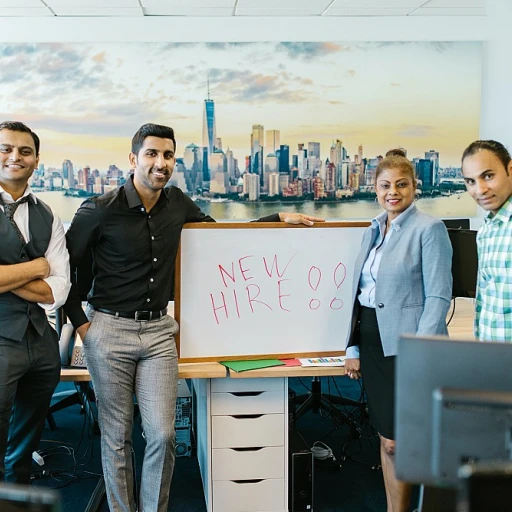Understanding Compliance in HR
Grasping the Essentials of HR Compliance
In today's rapidly evolving workplace, understanding compliance in HR is more vital than ever. As organizations navigate through the complexities of employment laws and regulations, ensuring HR compliance becomes a cornerstone of business operations. But what does HR compliance actually entail?
HR compliance refers to the process of ensuring that your company adheres to all applicable laws, regulations, and standards governing the workplace, including hiring practices, employee management, and workplace safety. It's about creating a fair and equitable work environment while shielding the organization from legal repercussions.
Comprehending the various facets of HR compliance requires an awareness of key laws and regulations, which are covered in the subsequent sections of this article. Moreover, developing a robust compliance checklist is critical, as highlighted later in the discussion.
Part of mastering HR compliance is also about making informed decisions when implementing these processes. To gain insights into crucial decision-making strategies, you can refer to our detailed guide on
mastering decision-making in HR management, which offers valuable perspectives.
Ultimately, a firm grasp on HR compliance is not only about adhering to mandates but also fostering a culture of transparency and accountability within your organization. Through proactive compliance management, organizations can maintain trust and integrity in all employee interactions.
Key Employment Laws and Regulations
Significant Employment Laws and Guidelines
Human resources professionals play a vital role in ensuring their organizations comply with numerous employment laws and regulations. These laws are designed to protect both employees and employers by creating a standard framework under which businesses operate.
Employment laws primarily fall under several categories, including but not limited to:
- Equal Employment Opportunity (EEO): This ensures that all individuals have equal chances in recruitment, hiring, promotions, and other employment practices without discrimination.
- Wage and Hour Laws: These laws provide guidelines on minimum wage, overtime pay, and child labor regulations. The Fair Labor Standards Act (FLSA) is a key player here.
- Health and Safety Regulations: Occupation Safety and Health Administration (OSHA) regulations ensure the maintenance of safe working conditions.
- Family and Medical Leave: This includes the Family and Medical Leave Act (FMLA), which provides eligible employees with unpaid, job-protected leave for specified family and medical reasons.
- Immigration Regulations: Managing compliance in this area involves adhering to laws that govern employment eligibility and documentation, such as I-9 verification.
Keeping up with these laws requires continuous education and awareness of updates and changes to the regulations, which can vary by state or region.
HR professionals must interpret and apply these laws accurately within their organizations to mitigate risk and avoid potential legal issues. Building a compliance checklist (as discussed in the subsequent sections) can be particularly useful for structuring these obligations and ensuring consistent compliance efforts.
Building a Compliance Checklist
Creating an Effective Checklist for HR Compliance
In human resources, managing compliance involves staying current with an array of regulations and laws. To ensure that your HR operations are aligned, creating a thoughtful and comprehensive compliance checklist is critical. A well-structured checklist will not only help you keep track of essential tasks but also promote organizational accountability.
Before you begin drafting your checklist, it's important to understand the purposes of current employment laws and how they impact your organization. This knowledge can inform your checklist and ensure all necessary compliance areas are covered.
When building a compliance checklist, consider the following aspects:
- Categorize Compliance Tasks: Break down tasks into specific categories such as hiring practices, employee benefits, workplace safety, and termination processes. This organization makes it easier to manage and delegate responsibilities within the HR team.
- Include Regular Updates: Laws and regulations can frequently change, so your checklist should include periodic reviews to ensure compliance is maintained. Assign responsibility for monitoring updates and implementing changes.
- Clearly Define Each Task: Avoid ambiguities by providing clear descriptions and guidelines for each compliance task. Include deadlines, responsible parties, and any necessary documentation or forms required to complete the task efficiently.
- Promote Employee Awareness: Part of your checklist should include measures to educate and train employees on compliance matters. This can involve workshops, onboarding sessions, and regular communication about policy changes.
For more insights into effective management skills that can assist in developing your compliance framework, check our comprehensive guide on
mastering the art of management skills for success.
By adhering to a thorough compliance checklist, you minimize risks and create a safe and fair work environment, fostering trust and stability within your organization.
Managing Compliance Risks
Understanding Risk Sources
To effectively manage compliance risks, it is crucial to first identify and understand their sources. Compliance risks in HR can stem from various areas, including changes in employment laws, internal policy misalignment, or inadequate employee training. Regular assessments and audits can help you stay informed about potential threats and make necessary adjustments to your HR practices.
Implementing Risk Mitigation Strategies
Once you've identified the potential sources of compliance risks, the next step is to implement strategies designed to mitigate these risks. This may involve updating employee handbooks, reinforcing policies through regular training sessions, or employing compliance management software to automate routine tasks. These steps not only help in preventing breaches but also in fostering a compliant organizational culture.
Continuous Monitoring and Reporting
Continuous monitoring is a critical component of compliance risk management. Establish a procedure for regularly reviewing HR operations and documenting any potential issues. Encourage open communication between HR staff and other employees to quickly address and resolve emerging concerns. Regular reporting can also keep stakeholders informed and engaged in maintaining compliance.
Creating a Contingency Plan
Despite the best measures, there may be times when compliance risks materialize. Having a contingency plan in place can be a lifesaver. Establish protocols for responding to compliance violations, including remediation strategies, communication plans, and reporting obligations. This level of preparedness ensures that your organization can handle breaches efficiently and maintain its reputation.
Integrating these strategies into your overall HR management approach can significantly reduce compliance risks, fostering a workplace environment that is both legally compliant and conducive to employee satisfaction.
Best Practices for HR Compliance
Staying Proactive and Informed
One of the best practices for HR compliance is to always stay proactive and informed about the ever-changing landscape of employment laws and regulations. This requires HR teams to actively monitor updates and participate in training and educational opportunities. Being informed helps prevent violations and supports a solid compliance framework.
Establish Clear Communication Channels
Effective communication is crucial for HR compliance. It's essential to establish clear channels wherein employees, managers, and HR professionals can report compliance issues or concerns. Having an open-door policy and ensuring anonymity in reporting can foster a culture of trust and ensure compliance matters are addressed promptly.
Utilize Technology for Compliance Management
Leveraging technology to streamline compliance management is another best practice. There are numerous software solutions designed to track employee information, automate compliance tasks, and ensure data accuracy. This not only reduces human error but also frees up valuable HR resources for more strategic tasks.
Conduct Regular Compliance Audits
Regular compliance audits are vital in identifying potential compliance risks before they become significant issues. These audits can help evaluate current practices and determine areas for improvement, ensuring that your HR processes are always aligned with legal standards.
Develop Comprehensive Training Programs
Training and development programs play a significant role in maintaining HR compliance. Investing in regular training sessions for employees and HR staff can increase awareness and understanding of compliance-related issues. Comprehensive training helps to reinforce the importance of compliance and equips staff with the necessary skills to handle compliance-related tasks effectively.
Real-World Examples and Case Studies
Learning from Real-World Compliance Scenarios
Examining real-world examples and case studies is an invaluable method for honing your skills in managing HR compliance. These case studies can offer insights into the practical applications of the strategies and tools discussed in earlier sections of this article.
Consider a scenario where a company failed to adhere to anti-discrimination employment laws. Ignorance in this area can lead to lawsuits and damage to the company's reputation. By understanding the specific mishaps that occurred, HR professionals can better strategize preventative measures and training programs that could mitigate such risks.
In another example, a business successfully navigates the complex landscape of data privacy regulations. By utilizing a comprehensive compliance checklist, they ensured all procedures aligned with current laws, thereby preventing potential violations. This case highlights the importance of staying updated with employment laws and the need for an effective monitoring system.
These examples serve as a blueprint on how to apply compliance knowledge in your own workplace. They also demonstrate the importance of continuous education and vigilance in HR practices to mitigate compliance risks effectively. By learning from past challenges faced by others, your HR team can proactively build robust compliance programs that protect both employees and the organization.





